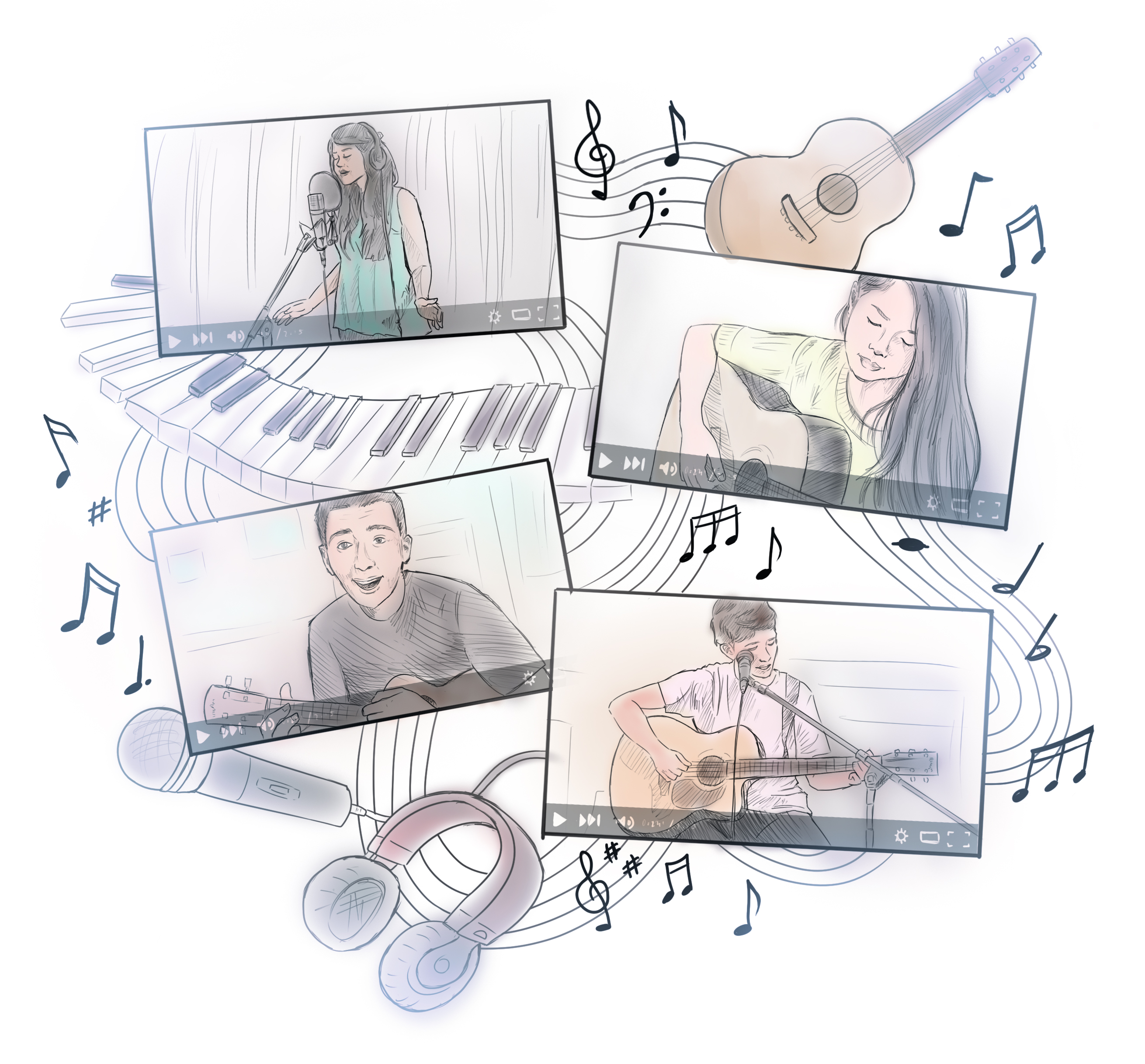Students channel musical creativity through YouTube videos

(Kelly Brennan/Daily Bruin senior staff)
By Emily McCormick
Sept. 18, 2015 8:42 p.m.
All it takes is a webcam, an internet connection and a YouTube account to share a voice with the world.
Since its formation a decade ago, YouTube has become a platform for sharing entertainment, opinions and music. Some of the most popular videos to hit cyberspace are covers, or amateur renditions of songs originally recorded by famous artists. Just type in “song covers” into the YouTube search bar, and over four million hits pop up.
Musically-inclined students at UCLA of all ages, majors and experience levels have joined the movement, dedicating YouTube channels to reimagining and reinterpreting popular songs for sharing with friends, family and the global digital community. Most began posting videos in high school, using their YouTube channels as a creative musical outlet.
Jason Mally, a first-year computer science student who has been posting videos to his channel for the past four years, said he loves the freedom involved in making covers. He said he loves taking artistic liberties in his acoustic covers of songs like “We Can’t Stop” by Miley Cyrus or “Karma Police” by Radiohead, rewriting parts of the music by ear.
“Sometimes I stick close to the original song and just add a riff or modify a strumming pattern,” Mally said. “But sometimes I’ll change up the rhythms and end up changing the keys. … I want to see how far I can take (the songs).”
Mally said audiences are drawn to covers because of the new light the cover artists shed on familiar pieces.
To steer clear of the common guitar-vocal covers that crowd YouTube, Maya Nag, a third-year biochemistry student, said she dedicates her channel to clarinet covers. The classically-trained bass clarinetist said she uses her background in music theory to pare down heavily-processed pop songs into instrumental covers. Her rendition of Bruno Mars’s “Just the Way You Are,” for example, involves just two unaccompanied clarinets.
“You strip away all the artificiality of popular music and you can just hear the music for what it really is,” Nag said.
Nag said she thinks the simplicity of making covers also makes it a popular hobby among amateur musicians. Recording covers, she said, is within anyone’s means: Professional equipment or studio software is not necessarily needed to produce great music.
Professor Robert Fink, who heads UCLA’s Music Industry Minor, said outfitting a music studio at a professional level is a million-dollar investment requiring equipment like an acoustically-treated recording space, multitrack console, quality microphones and mixing programs.
However, he said producing a decent-quality recording is very possible for amateur artists, especially if they are willing to invest a couple hundred dollars for a good microphone.
As for mixing and editing, Fink said even basic computer programs nowadays have the capabilities required for recreational cover artists.
“Garage Band is super – all that’s lacking are the fancy bells and whistles,” Fink said. “Its basic way of dealing with sound isn’t really any different than Pro Tools or any other mixing program.”
Brenda Chan, a first-year chemistry student, said making covers is both an easy and casual way to share her music among her social circles.
“I’m just posting videos for myself and for my friends and family,” Chan said. “I’m not trying to be a major superstar.”
Fame, however, is sometimes the product of a well-publicized cover or two. YouTube personalities known for their covers such as Kurt Hugo Schneider and Madilyn Bailey, whom Chan said have inspired her, have garnered millions of subscribers and a worldwide fan base. Likewise, pop stars like Justin Bieber, Karmin and Cody Simpson also owe their spots on top music charts to YouTube.
First-year ethnomusicology student Katherine Jung said she was granted her 15 minutes of fame thanks to a song on her YouTube channel. After a year of posting covers of pop songs, Jung penned her own original song, “Humans of New York,” in 2013 as a tribute to the popular Facebook page by the same name.
She emailed the link to Brandon Stanton, the creator of the page, not fully expecting that he’d ever watch her video.
“I woke up one day and checked my email and there were 2000 emails out of nowhere,” Jung said. “(Stanton) had posted about my song and reposted it on his page and his Tumblr.”
The video for “Humans of New York,” which now has over 100,000 views, earned Jung offers for musical collaborations, management and performance opportunities.
Jung said the hype surrounding the song died down after a couple months, but she continues to post videos of her work to her channel and hopes to be a songwriter in the future. She said she thinks posting videos to YouTube is a good place for young musicians to start getting an online following.
“YouTube is a really good way to test out your ear and grasp on the whole music thing,” Jung said. “And YouTube is so global – you can get really big really fast.”

